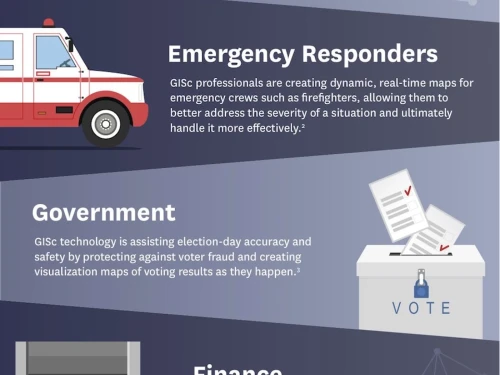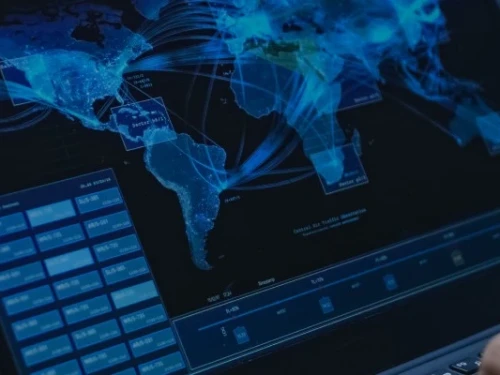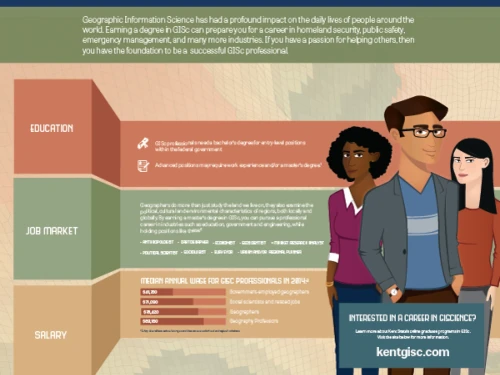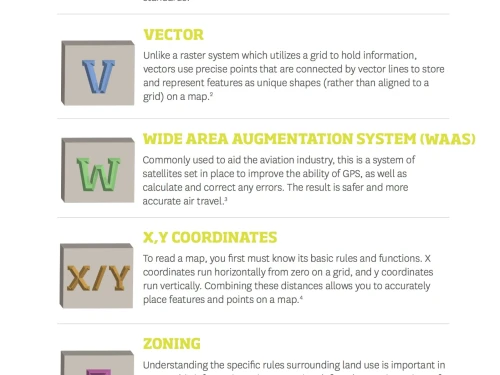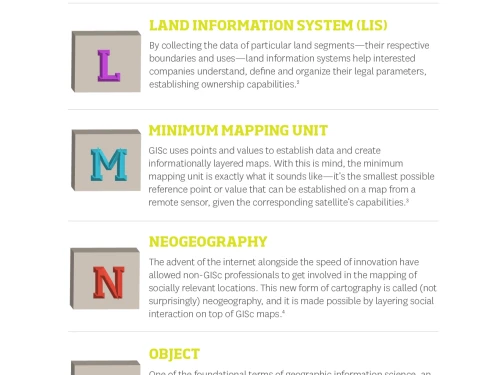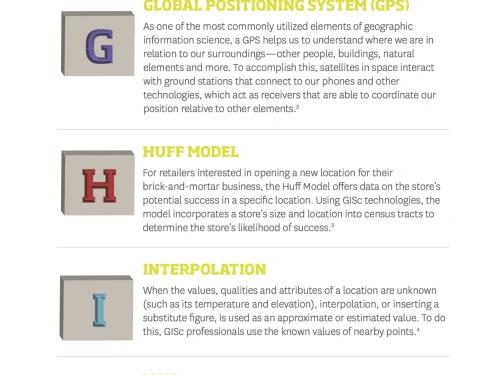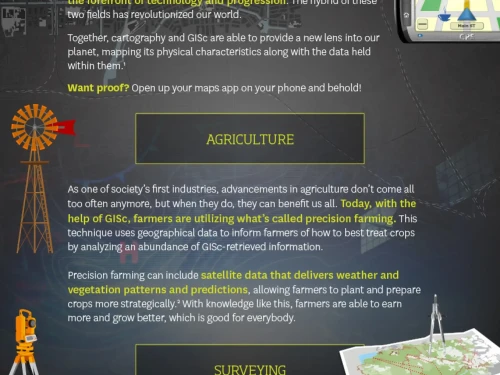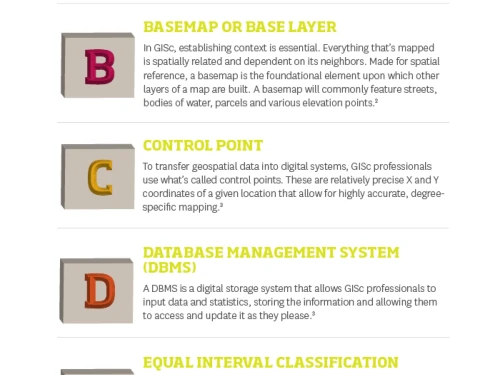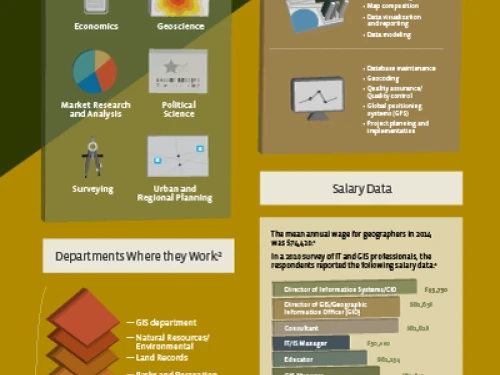Kent State Online Blog
Geographic Information Science
Explore the evolving world of Geographic Information Science (GISc) through Kent State’s blog posts. Topics cover the increasing demand for GIS professionals, the difference between GISc and GIS, and the wide-ranging applications of GISc in fields like urban planning, environmental management, and data storytelling. Learn about exciting career paths, industry developments, and Kent State faculty’s academic achievements in this rapidly growing field.
Related Blog Posts
Geographic information science (GISc) has numerous applications in fields ranging from emergency response and agriculture to finance and real estate, and with GISc jobs set to increase by 14% by 2026,1 a master’s in GISc and a solid understanding of how to apply geographic information systems (GIS) could be what sets you apart in this growing field.
Although various fields of science may differ in how they use the word, a “biome” can generally be defined as a geographically large ecosystem with a shared physical climate. Earth’s biomes can be classified broadly into two overarching categories, terrestrial and aquatic. These are further divided based on climate and on the dominant plants and animals that have evolved to thrive in their specific environmental conditions.
Human activity has had an effect on the environment for thousands of years, from the time of our very earliest ancestors. Since Homo sapiens first walked the earth, we have been modifying the environment around us through agriculture, travel and eventually through urbanization and commercial networks. At this point in earth’s physical history, our impact on the environment is so substantial that scientists believe “pristine nature,” or ecosystems untouched by human intervention, no longer exist.1
There’s an old adage nearly everyone’s heard: “Work a job you love, and you’ll never work a day in your life.” As true as this sentiment may be, the facts about employment suggest that a majority of people are not working jobs they love. In fact, far from it.
In the modern world, media is saturated with images of natural disasters and their impacts on human health and infrastructure. And while the most memorable images for many are of the damages done by hurricanes, tornadoes or earthquakes, in the U.S., the deadliest atmospheric hazard over the last few decades has been excessive heat. While everyone generally knows the advice to take it easy during hot weather, it tends to get much less attention than other hazards because its impacts are not nearly as visibly dramatic. This said, several hundred people a year in the U.S. on average still die from excess heat.
We’re all familiar with oceanic tides, which cycle roughly every 12 1/2 hours based on the relative positions of the earth and the moon. Some places have greater ranges than others, based on the local configuration of the coastline. Every couple of weeks, when the sun, earth and moon all line up, we have “spring tides,” in which the tidal fluctuations are stronger than normal.
Click on the image below to explore all of the aspects of a GIS career with our new infographic. Read up on the job market, education requirements and salary expectations for a GIScience professional.
A pair of Kent State University geographers have teamed up to secure two research grants totaling more than $550,000 for separate projects to study climate change and weather patterns.
We typically view language as evolving at a glacial pace. Yet, consider the fact that the Merriam-Webster Dictionary added more than 1,000 new words in February 2017—and more than 2,000 in April 2016.1
A definition. For all practical purposes, it’s the concise explanation of an element or experience. However, the true value of a definition extends far beyond this. What it also provides is the foundation for further knowledge—and this is critically important.
Geography professors at Kent State University see Hurricane Harvey’s unusual rainfall and the flooding in its aftermath as an opportunity to teach their students about meteorology, the health hazards left behind and the people whose lives have been changed forever.
Every profession has a lexicon, turns of phrase that are unique to its processes and techniques. The world of geographic information science (GISc) is no exception.
As history marches forward, certain technologies are inevitably left behind in favor of what’s most beneficial to society in the moment or in the future. While leaving behind what’s no longer beneficial is important to technology and innovation, it also renders certain industries and careers as outdated—no matter how important they may have been at one time.
The geographic information science (GISc) field is a diverse and rapidly growing industry in which some roles are projected to grow by 14% by 2026,1 which makes the role of a GISc technician all the more vital. As we watch natural disasters unfold and the effects of human interference take shape on our planet, the need for GISc expertise and spatial technology prowess is featured daily, worldwide. Additional GISc experience can help environmental protection professionals make significant impacts in solving major global crises like water resources or climate change.
The world of geographic information science (GISc) is filled with unique acronyms, phrases and definitions. Because of this wide range of terminology for tools, technologies and techniques used in the field, a glossary of important terms is as vital as it is extensive.
Data has transformed the way we live. There is so much information available to us these days that we can use it to make pinpoint and informed decisions that go beyond educated guesses or hunches. Data can be leveraged in almost any area of life and industry. Thomas Cuyler, a high school senior at School Without Walls in Rochester, New York, has decided to do both.
Racial segregation in the United States of America can be a sensitive or controversial subject that many people prefer not to discuss. The Civil Rights Act of 1964 was enacted to prevent discrimination based on race, skin color or national origin, and since that time, it might be taken for granted that segregation based on race no longer occurs in the United States.




